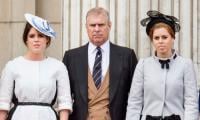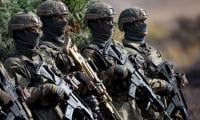Pakistan’s Independence Day over the years
As August dawns upon the nation, it becomes veiled in a tapestry of flags and banners, all in anticipation of the impending Day of Independence. Nevertheless, the jubilant celebrations of this significant day have undergone a constant evolution since the inception of Pakistan.
Birth and beginning - 1947
The emergence of Pakistan was marked by Lord Louis Mountbatten, the viceroy of the Indian Subcontinent, reading out the King’s message that recognised the achievement of independence by the new Dominion of Pakistan. The Pakistan flag was hoisted with pride on government edifices, symbolising the newfound religious, political, and economic liberties in Jinnah’s envisioned Pakistan. People exchanged sweets, and the celebrations continued energetically well into the late hours of the night.
1948
As Pakistan’s first anniversary approached, its citizens brimmed with anticipation for a broadcast by Muhammad Ali Jinnah and a grand assembly led by Liaquat Ali Khan. Given that religious tensions played a pivotal role in the genesis of Pakistan, the emphasis on prayers as the cornerstone of this historic day became palpably understandable. People from diverse communities congregated at their respective mosques, temples, or churches, uniting in prayer and expressing gratitude for a year of remarkable progress.
Quest for stablility (1951 – 1953)
The buoyant enthusiasm endured for the subsequent two years until the nation was plunged into sorrow. On October 16, 1951, a somber event unfolded as Liaquat Ali Khan fell victim to an assassin’s bullet. In the wake of this tragedy, figures like Fatima Jinnah and numerous other dignitaries dedicated their efforts to the cause of Kashmir’s liberation. Consequently, the ensuing Days of Independence bore a subdued demeanor, bereft of the usual festivities, as the collective consciousness was poignantly attuned to the plight of the Kashmiri people.
During this period, the exuberance of celebrations was overshadowed by the prevailing political instability that enveloped the nation. In Karachi, the capital city of Pakistan at that time, commemorations were scaled down. They primarily comprised an Armed Forces Ceremonial March held early in the morning, followed by an inauguration ceremony at Quaid-i-Azam’s birthplace, and a public gathering at Jehangir Park.
1957
Patriotic spirits resurged at the completion of a decade to independence. The day was declared a public holiday and mass meetings and rallies were taken out throughout the country. Karachi was to start the day off with the firing of 31 guns.
1958-1961
During these years, Pakistan experienced a period of prosperity often referred to as its golden era. The military rule led by General Ayub Khan, focused on fortifying Pakistan’s economic foundations in alignment with Jinnah’s vision. Fatima Jinnah underscored the imperative of embodying and upholding the very ideals and objectives that underpinned Pakistan’s formation.
Against the backdrop of numerous global developments unfolding in Kashmir, Algeria, and Palestine, the commemoration of Independence echoed with a palpable sense of anticipation for what lies ahead.
Turbulence and transformation (1969 -1971)
The resignation of Ayub Khan immediately led to the imposition of a second martial law by Yahya Khan. For the following few years, especially in 1971, he “called upon the nation to stand united to defend the sovereignty and integrity of the country against internal subversion and threat of external aggression.”
Resilience and resurgence (1971 – 1975)
Zulfikar Ali Bhutto was officially sworn in as the ninth premier of Pakistan on August 14, 1973. With his reign, Independence Day festivities were driven by a patriotism that stemmed from a new determination of upholding democracy and peace-building motives with Pakistan’s neighbouring countires whilst withholding its territorial integrity.
Institutionalising Independence Day celebration (1977 – 1988)
During Ziaul Haq’s martial tenure, there was a conspicuous attempt by the martial-law government to promote national unity. On August 15, 1981, the government ordered all traffic to halt at 9 am so that people could exit their vehicles and sing the national anthem. A multitude of cars, buses and trucks were drowned in patriotic decorations. He ordered that the national flag be flown from all residential and commercial buildings. From that day on, flying the quintessential marker of Pakistani patriotism, the flag, appeared to become the most popular manifestation of the Independence Day.
A decade of reflection (2020-Present):
This trip down memory lane brings us to the present executions and arrangements of 14th August festivities. August is annually greeted with local shops being decked out with small flags, green lights, and all brands initiate the months with their virtual and physical marketing having patriotic banners. An innovative trend that has taken the Pakistani fashion industry by storm is the concept of an “Azaadi Sale” and “Azaadi Line,” in which clothes are sold in shades of green and white, often for lower prices, and these very clothes are then used to celebrate the occasion itself.
In hopes of fostering national unity, discipline, and reminding ourselves of the need to express gratitude and pride towards the sacrifices of our forefathers, we will continue to celebrate 14th August with the outmost liveliness and patriotism.
-
 Jonathan Quick, The New York Rangers Face Mounting Pressure As Losses Pile Up
Jonathan Quick, The New York Rangers Face Mounting Pressure As Losses Pile Up -
 Timothée Chalamet, Kylie Jenner Are Living Together In LA: Source
Timothée Chalamet, Kylie Jenner Are Living Together In LA: Source -
 Johnny Knoxville Net Worth: How The Actor Built A $50mn Fortune
Johnny Knoxville Net Worth: How The Actor Built A $50mn Fortune -
 Meghan Markle Hidden Agenda Behind Returning To UK Exposed
Meghan Markle Hidden Agenda Behind Returning To UK Exposed -
 Raptors Vs Pacers: Toronto Shorthanded With Key Players Ruled Out Due To Injuries
Raptors Vs Pacers: Toronto Shorthanded With Key Players Ruled Out Due To Injuries -
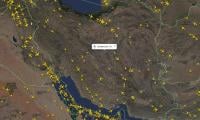 Iran Flight Radar Update: Airspace Closure Extended Amid Heightened Tensions
Iran Flight Radar Update: Airspace Closure Extended Amid Heightened Tensions -
 Toronto Snow Day: What To Expect After Environment Canada's Snow Storm Warning
Toronto Snow Day: What To Expect After Environment Canada's Snow Storm Warning -
 Astrologer Gives Their Verdict On ‘Rat’ Prince Harry’s New Year
Astrologer Gives Their Verdict On ‘Rat’ Prince Harry’s New Year -
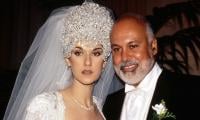 Céline Dion Honours Late Husband René Angélil On 10th Anniversary Of His Death
Céline Dion Honours Late Husband René Angélil On 10th Anniversary Of His Death -
 Meghan Markle Seeks 'special Treatment' Ahead Of Possible UK Return: Report
Meghan Markle Seeks 'special Treatment' Ahead Of Possible UK Return: Report -
 EBay Launches First Climate Transition Plan, Targets 'zero Emissions' By 2045
EBay Launches First Climate Transition Plan, Targets 'zero Emissions' By 2045 -
 Rihanna To Announce Music Comeback And UK Stadium Shows
Rihanna To Announce Music Comeback And UK Stadium Shows -
 Tish Cyrus Calls Post-divorce Period 'roughest' Time Of Her Life
Tish Cyrus Calls Post-divorce Period 'roughest' Time Of Her Life -
 Prince Harry Turns To Hands-on Fatherhood As ‘crippling Social Anxiety’ Get Choke Hold
Prince Harry Turns To Hands-on Fatherhood As ‘crippling Social Anxiety’ Get Choke Hold -
 Pete Davidson Launches New Talk Show From His Garage
Pete Davidson Launches New Talk Show From His Garage -
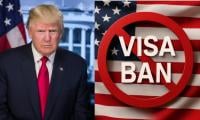 US To Suspend Immigrant Visa Processing For 75 Countries: Know All Details
US To Suspend Immigrant Visa Processing For 75 Countries: Know All Details
